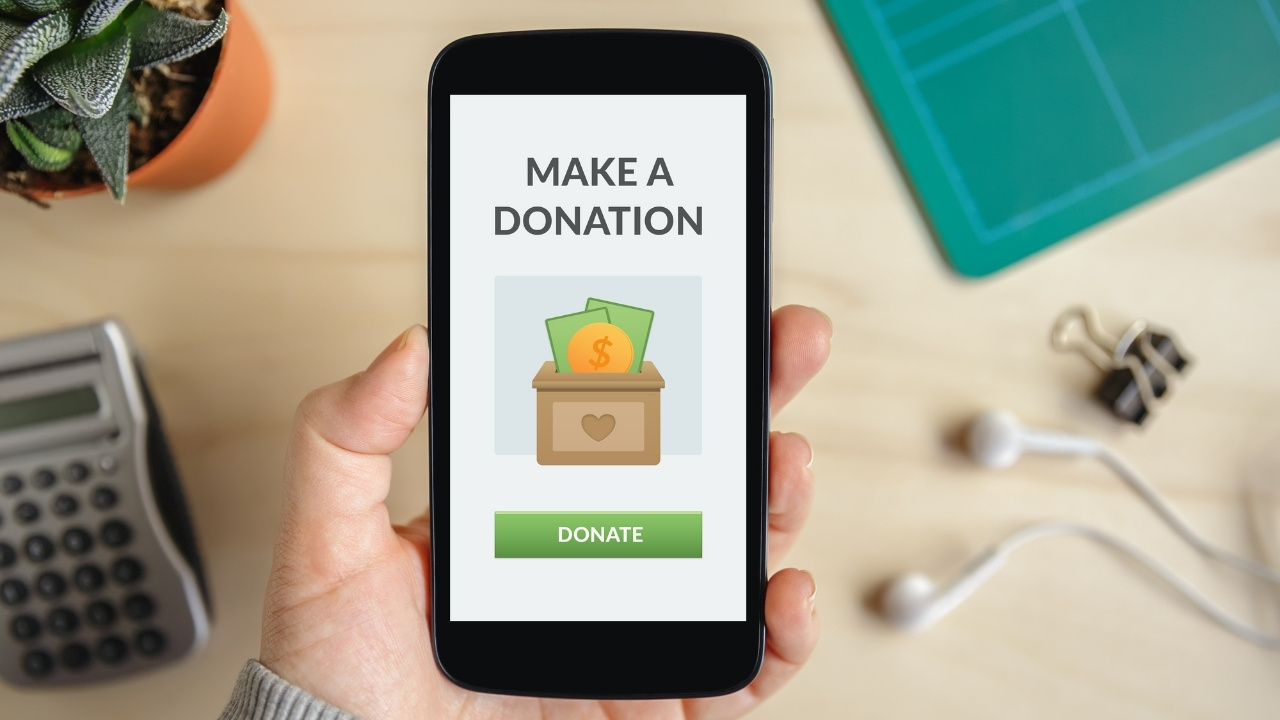
Charity Scams: How To Ensure Your Donations Make A Difference
The holiday season often evokes generosity in people through charitable giving and donations to worthy causes. Unfortunately, it also attracts scammers who try to take advantage of kind-hearted donors.
According to the Federal Trade Commission, Americans reported losing over $300 million to charity scams in 2023 alone. As we seek to make a positive difference with our hard-earned money, we must ensure it does not end up in the wrong hands.
So, how can well-meaning donors avoid charity scams? While no one wants to approach charitable giving with cynicism, a degree of healthy skepticism, awareness, and research can help guarantee your donations make an impact. This article will explore common charity scam tactics, tips to verify non-profit legitimacy, and signs your donations are benefiting real programs and people in need.
The Rising Tide of Charity Scams
Scammers use urgency, emotion, and confusion to take money meant for good.
Charity scammers weaponize highly emotional appeals to spur donors into immediate action before thoroughly vetting recipients. Through urgency and confusion, contributions rapidly redirect away from real relief programs into scammer pockets instead.
In an article by Aura, Americans lost $4.4 million to charity fraud in 2023. Top tactics include:
Mirroring Established Charity Names
Scammers know reputable charity names carry trust, so they minimize work by slightly modifying established nonprofits’ handles. Fraudsters add small extra words, flip name orders, or use different abbreviations, hoping donors accidentally select the fake charities option instead of the real charity.
For example, scammers used names like "Americas Fund" after 9/11 instead of "The Americas Fund." Watch carefully for these minor name adjustments, especially after major disasters when emotions run high.
Crafting Urgent Social Media Appeals
Scammers craft highly emotional viral social media posts claiming urgent needs for distressed groups after disasters, during holidays, or linked to polarization. They pull heartstrings and spread dramatic stories requiring immediate support.
Posts ask viewers to like, share, or click if they “truly care” about the cause. However, the 127,000 shares and likes never translate to real disaster relief or cause funding. Instead, all clicks and traction propagate the scammers’ fraudulent messages and efforts.
Promising Tax Deductions on Fake Sites
According to the IRS, most known charity scam websites falsely promise donors membership in tax deduction networks. These sites incorrectly claim deductibility to add legitimacy and hide missing transparency details.
Savvy donors always manually check an organization’s claimed tax statuses against IRS records before ever providing personal information or payment data.
This protects contributors from funding operations that lack proper oversight and accountability for donations.
Leveraging Peer-to-Peer Platforms
Crowdfunding platforms like GoFundMe and Facebook Fundraisers offer the convenience of supporting causes with just a click. Unfortunately, scammers exploit these networks, too.
The New FTC Data show consumers reported losing nearly $8.8 billion to scams in 2022. Ensure campaign organizers seem credible through social media cross-checks before contributing to viral appeals.
While awareness of common techniques helps identify suspicious requests, proactive research remains the best prevention before releasing hard-earned dollars.
Asking for Unusual Payment Methods
While secure online payment processing is common today, scammers may request donations be sent in cash, by wire transfer, gift cards, or cryptocurrency. These methods provide no oversight on where funds go and cannot be recovered if fraudulent.
Being aware of common scam tactics helps identify suspicious requests, but the best way to avoid getting duped is through proactive research before any money exchanges hands.
Verifying Charity Legitimacy
How can someone looking to donate wisely separate the true charities from the scammers? Don’t let criminals exploit empathy—follow these in-depth guidelines to confirm nonprofits before ever providing payment or personal details:
Confirm 501(c)(3) Status
All legitimate IRS-registered charities in the U.S. carry 501(c)(3) certifications, meaning donations qualify as tax-deductible. This also requires increased transparency on spending.
Use the official IRS Tax Exempt Organization Search tool at https://www.irs.gov/charities-non-profits to independently verify a nonprofit’s current status and review financial documents directly from the source before donating. This protects against scammers falsely claiming made-up registration numbers. Take the extra 5 minutes.
Research Reputation on Third Party Watchdog Sites
Trusted independent charity review sites like Charity Navigator, GuideStar and BBB Wise Giving Alliance analyze hundreds of metrics based on required IRS reporting for all registered nonprofits.
They evaluate everything from financial transparency to spending breakdowns between programs vs. overhead, governance policies, leadership compensation, and on-the-ground effectiveness. Consult any of these impartial third parties’ ratings, especially the detailed breakdowns of where your dollars go.
Only consider nonprofits that earn high accountability and transparency scores alongside dedicating 80% or more of spending directly into assisting beneficiaries through programs. If measurements don’t align, funding likely feeds bloated salaries and admin instead of real mission impact for those in need.
Verify Leadership & Program Examples
Thoroughly research founders, board members, spokespeople and other organizational leadership related to the charity online through media articles, bio pages and public professional registrations. Scam operations fail to provide much history on key decision-makers.
Additionally, seek out published, specific, and dateable real-life program stories showing how major and recent initiatives directly assisted recipients through provided services, materials, or resources.
Concrete ongoing examples disputed false promises and emotional appeals from scammers. Vet social media, too, for legitimate programs helping real people.
Ask Pointed Questions Before Ever Providing Funds
Donors have every right to fully understand—in concrete quantitative terms—how their dollars translate to boots-on-the-ground support for a nonprofit’s cause. Ask for specifics like program benchmarks, the number of people assisted annually, comparisons to prior years or top geographical regions aided.
Whether supplying meals, building homes, shipping medicine, training recipients, monitoring impact or other charity initiatives, the nonprofit should readily share tracked outcomes and their significance to donors without hesitation.
If answers seem vague or statistics don’t materialize, funds likely don’t efficiently further missions. Protect payments until full transparency on the proposed use and follow-up confirms recipient-focused outcomes.
Identifying Fraudulent Donation Requests
Even when scammers get charity names and materials right thanks to the internet, several factors can expose fraudulent requests:
They Cannot Answer Specific Questions
As highlighted above, a legitimate charity will share many details about how it uses donations to support its mission. Scammers don’t have real programs and impact to reference.
Time Pressure
Scammers use false urgency to obtain money quickly before donors scrutinize them further. A real charity will allow time for proper research and consideration.
Requests for Cash or Gift Cards
These forms allow zero oversight of fund use and are nearly impossible to recover. Any charity asking for these payment methods raises suspicion.
Email or Text Requests
Most scammers use email or mobile messaging to reach more targets quickly. Always verify a charity first rather than trusting any random solicitation.
No Personalization
Today, software lets scammers craft mass texts and emails quickly. Notice if a message seems generic without using your name or any personal details.
Poor Spelling or Grammar
Messages filled with obvious errors likely come from fraudsters rather than established charities with the means to edit and proofread.
Safeguarding Charitable Donations
Simple precautions empower donors to direct gifts responsibly.
During seasons of giving, donors multitask by buying gifts for loved ones while budgeting extra for those less fortunate. Unfortunately, scammers also increase attempts to siphon donations away from legitimate programs.
By identifying charity scam red flags, verifying nonprofits, asking direct impact questions and avoiding pressure, donors of all income levels can ensure their generous dollars and good intentions fuel real outcomes. Additional safeguards like tracking tax letters and following up on the use of restricted funds provide further validation.
Finally, donors who feel weary of navigating scam attempts should remember that trusted charitable organizations make a donation easy and transparent. Support familiar local charities or explore highly-rated global nonprofits. If identifying fraud ever seems complicated, redirecting donations to top-tier relief organizations lets third-party experts manage funding effectively.
This holiday season and always, uphold the giving spirit by taking simple steps to guarantee gifts positively shape lives. Ignore suspicious charitable appeals and focus on generosity where it counts.




